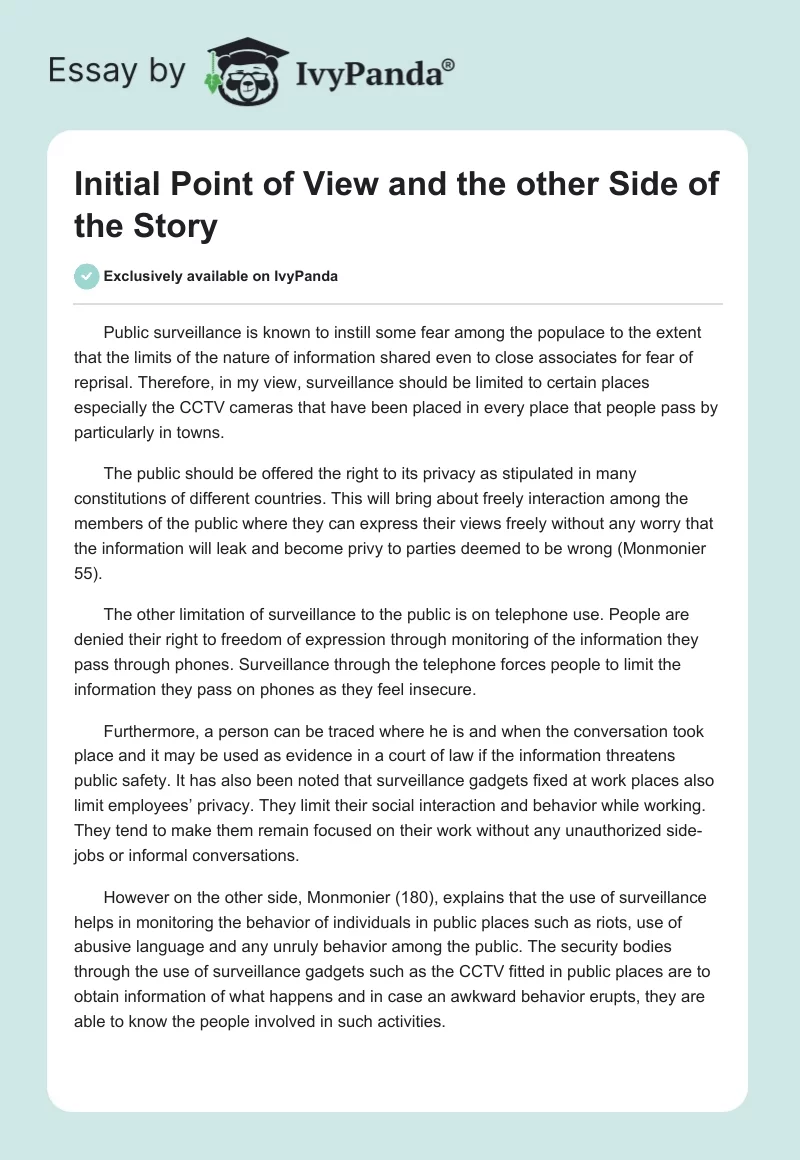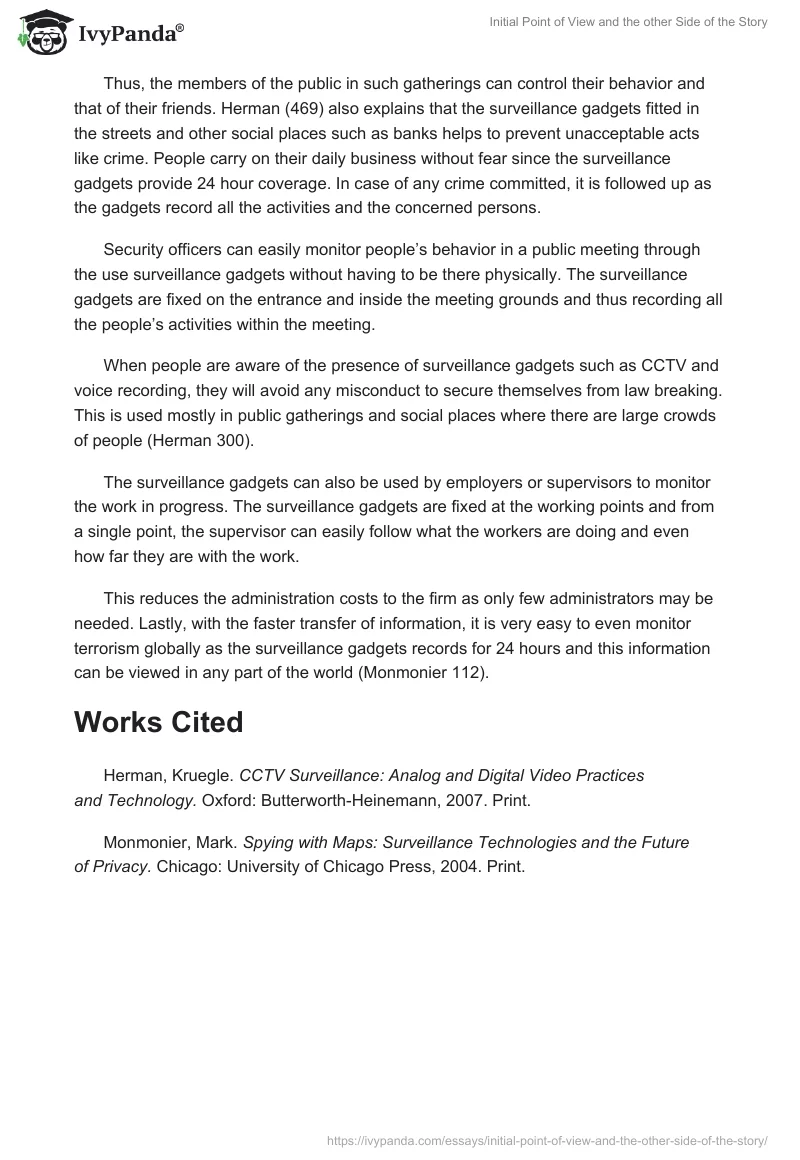Public surveillance is known to instill some fear among the populace to the extent that the limits of the nature of information shared even to close associates for fear of reprisal. Therefore, in my view, surveillance should be limited to certain places especially the CCTV cameras that have been placed in every place that people pass by particularly in towns.
The public should be offered the right to its privacy as stipulated in many constitutions of different countries. This will bring about freely interaction among the members of the public where they can express their views freely without any worry that the information will leak and become privy to parties deemed to be wrong (Monmonier 55).
The other limitation of surveillance to the public is on telephone use. People are denied their right to freedom of expression through monitoring of the information they pass through phones. Surveillance through the telephone forces people to limit the information they pass on phones as they feel insecure.
Furthermore, a person can be traced where he is and when the conversation took place and it may be used as evidence in a court of law if the information threatens public safety. It has also been noted that surveillance gadgets fixed at work places also limit employees’ privacy. They limit their social interaction and behavior while working. They tend to make them remain focused on their work without any unauthorized side-jobs or informal conversations.
However on the other side, Monmonier (180), explains that the use of surveillance helps in monitoring the behavior of individuals in public places such as riots, use of abusive language and any unruly behavior among the public. The security bodies through the use of surveillance gadgets such as the CCTV fitted in public places are to obtain information of what happens and in case an awkward behavior erupts, they are able to know the people involved in such activities.
Thus, the members of the public in such gatherings can control their behavior and that of their friends. Herman (469) also explains that the surveillance gadgets fitted in the streets and other social places such as banks helps to prevent unacceptable acts like crime. People carry on their daily business without fear since the surveillance gadgets provide 24 hour coverage. In case of any crime committed, it is followed up as the gadgets record all the activities and the concerned persons.
Security officers can easily monitor people’s behavior in a public meeting through the use surveillance gadgets without having to be there physically. The surveillance gadgets are fixed on the entrance and inside the meeting grounds and thus recording all the people’s activities within the meeting.
When people are aware of the presence of surveillance gadgets such as CCTV and voice recording, they will avoid any misconduct to secure themselves from law breaking. This is used mostly in public gatherings and social places where there are large crowds of people (Herman 300).
The surveillance gadgets can also be used by employers or supervisors to monitor the work in progress. The surveillance gadgets are fixed at the working points and from a single point, the supervisor can easily follow what the workers are doing and even how far they are with the work.
This reduces the administration costs to the firm as only few administrators may be needed. Lastly, with the faster transfer of information, it is very easy to even monitor terrorism globally as the surveillance gadgets records for 24 hours and this information can be viewed in any part of the world (Monmonier 112).
Works Cited
Herman, Kruegle. CCTV Surveillance: Analog and Digital Video Practices and Technology. Oxford: Butterworth-Heinemann, 2007. Print.
Monmonier, Mark. Spying with Maps: Surveillance Technologies and the Future of Privacy. Chicago: University of Chicago Press, 2004. Print.


